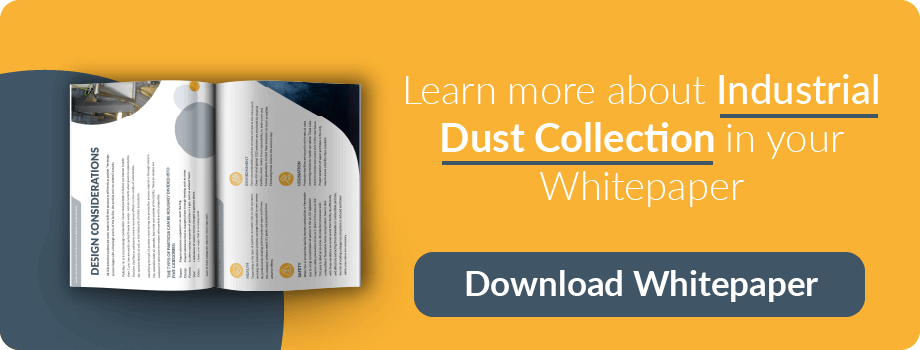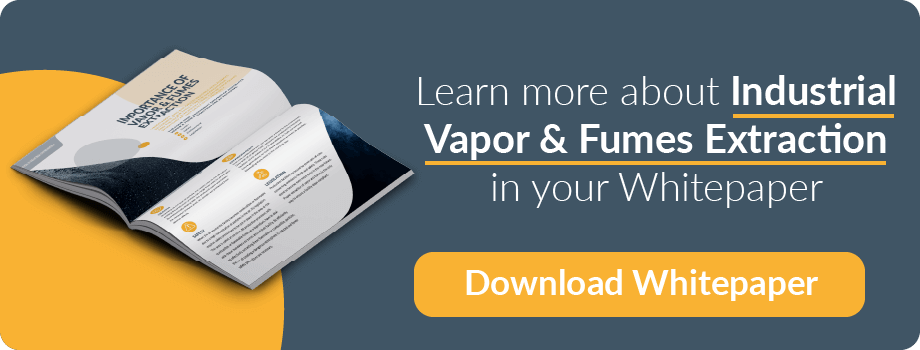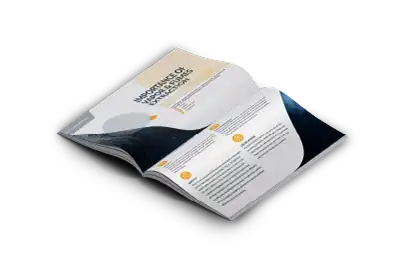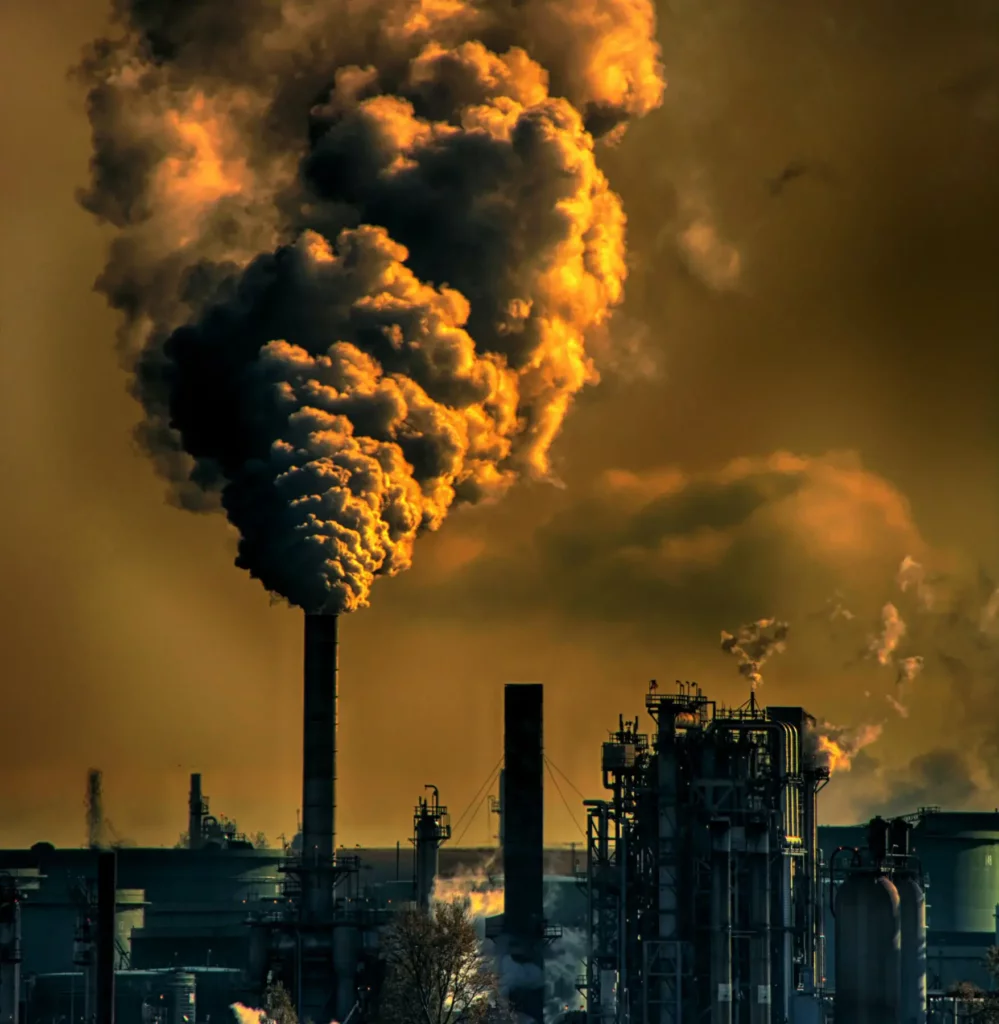The industrial air filtration market is, a significantly large one, with a value running into the billions of euros. Every large-scale manufacturer has to handle the challenges posed by dust or vapor, aerosols, odors or ultra-fine particles (UFPs).
Dust & Vapor extraction: One of many considerations
Nonetheless, there exists a potential for air filtration to be somewhat overlooked. The chances of this are raised when we factor in manufacturers establishing new operations on greenfield sites.
Put simply, there are so many things for manufacturers to consider in such circumstances, that air filtration may not be top of mind. They are, after all, just one amongst many things that need to be factored in.
Standard industrial air solutions – how quick & dirty are they?
Faced with such a scenario, it can seem attractive to opt for the fastest, and seemingly cheapest option; the standardized filtration system.
We live in a world that has become convinced of the benefits of standardization. Our furniture frequently comes in flat pack form, our vehicles and household goods roll regularly off production lines, we wear clothes produced by the same brands and eat fast foods prepared to fixed menus.
Standardized filtration systems: the pros
And why not? After all, standardizing things does, on the face of it, seem to offer significant benefits. These include:
- Relatively low capital expenditure
- Speed of availability
- Knowledge transfer between industries
- Proven reliability
To elaborate on these points, the fact that the OEM of a standardized system only has to develop one system and then mass produce it, ensures its cost efficiency – at least from the perspective of the initial investment.
The same large scale production ensures the ready availability of the system – and, for that matter, related spare parts. In fact, standard systems are frequently produced in series for stock and can be delivered and installed almost immediately upon order.
Besides this, utilization of the same system across multiple industries allows for each sector to benefit from relevant lessons learned in others.
Ultimately, the result of this is that manufacturers have rapid access to a solution that has already demonstrated its effectiveness in operation; something that is proven.
Problem solved. Or is it?
Standard industrial air solutions: the cons
It is worth asking the question of whether or not there is also a downside to standard systems.
For one thing, the majority of series producers tend to be larger, publicly traded companies with a focus on maximizing shareholder return and potentially not on client care.
Additionally, such dedication to one system runs the risk of limiting expertise, which can further reduce options for the client.
Beyond this, a standard system itself is less flexible and cannot easily be adapted should a requirement arise.
So, is there a better way? Let’s consider the opposite end of the spectrum: creating a system entirely tailored for the industrial environment in which it will operate.
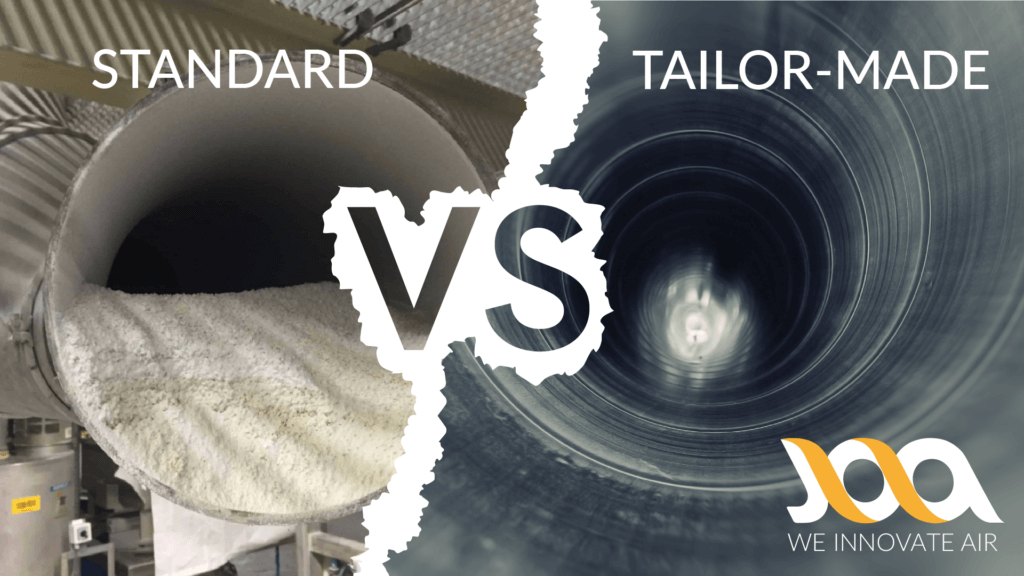
Raising the standard of air filtration: custom solutions
Why is a non-standard industrial air solution better? For starters, every site is unique. It follows logically that a unique site, with its own specific production process, has unique requirements.
Legislation that varies per country or region is just one example of how specific the requirements may be for differing locations.
That being the case, application of a standard system simply cannot meet all these varying requirements – it can, effectively, only perform a part of the task. The result cannot be other than a system that performs sub-optimally.
Installing optimal efficiency
A system tailored to the specifics of its environment is liable to offer greater efficiency.
For example, it is not unusual with a standard system not suited to the site specifics, to encounter over extraction – meaning that, although you workplace may be clean, your valuable product is being extracted to your dust collector, generating additional energy consumption and resource costs.
The same is true of under extraction, where piping becomes plugged due to use of a non-optimal system, leading to downtime, extra maintenance and dust explosion danger.
Such a system is also less likely to require unscheduled maintenance and repair work as it is not under such pressure to perform as required.
Additionally, more effective dust handling reduces explosion zoning and, consequently, lowers insurance premiums.
Creating a healthy working environment
More critically, a custom industrial air solution performing in alignment with the requirements of its environment offers a healthier, cleaner working environment for employees. The results of this are multiple; for example, happier, more productive employees, less likely to require time off for illness.
The benefits of tailored filtration
To summarize, the benefits of a custom solution are as follows:
- Every site is different
- Less energy is required to operate a system of appropriate dimensions
- Less energy is wasted
- Less downtime = more profitability
- Better working conditions = increased productivity
- Reduced explosion zoning = reduced insurance premiums
How to achieve optimal filtration
Considering all the points above then, what is the best way to find an appropriate solution that will enable you to handle the challenges of industrial air filtration in the most suitable way for your operation?
JOA has specialized in the design and installation of industrial air filtration systems for over 22 years, based on air technical modeling.
An integrated approach for best results
JOA’s approach lies not in the straightforward delivery of a standard product. It is our aim to serve as consultants, engineers and industrial filtration system manufacturer. An integrated approach towards the achievement of the best possible solution – first time right. That is to say, a system that offers the following:
- Stable performance within the relevant parameters
- Efficient consumption of energy
- Low maintenance demand
- Low operator exposure to emissions in internal and external environment
- Compliant and future proof for additional changes in legislation
Proven process
To ensure this, JOA follows a proven, multi-step process:
- Consultancy
- Engineering
- Air Technical Modeling
- Realization, implementation and commissioning
- Service/maintenance program/spare parts recommendations
Specialists on-site
Our specialists will first conduct a site visit. During this they will take a series of measurements to establish the parameters required to craft the perfect solution for the specifics of the situation.
These measurements are numerous, but will include a review of existing dust and/or vapor extraction. They will also establish the emission points of the site and concentration (parts per million (PPM) for vapors and concentration in milligrams per m3 for dust).
Using a wide range of specialist tools they will consider flow patterns, pressures and volatile organic compounds (VOCs).
They will also undertake consultation with operators, for example to establish the following:
- Access to measurement holes (e.g. via ladder/lift)
- Equipment specifications (scrubbers/fans)
- Raw material specifications, such as densities and explosions critical parameters (Kst, Pmax values)
The result will be able the establishment of the required capacity for optimal extraction at each point of emission. This will enable them to move to the next step in creating an air filtration system suited to your requirements.
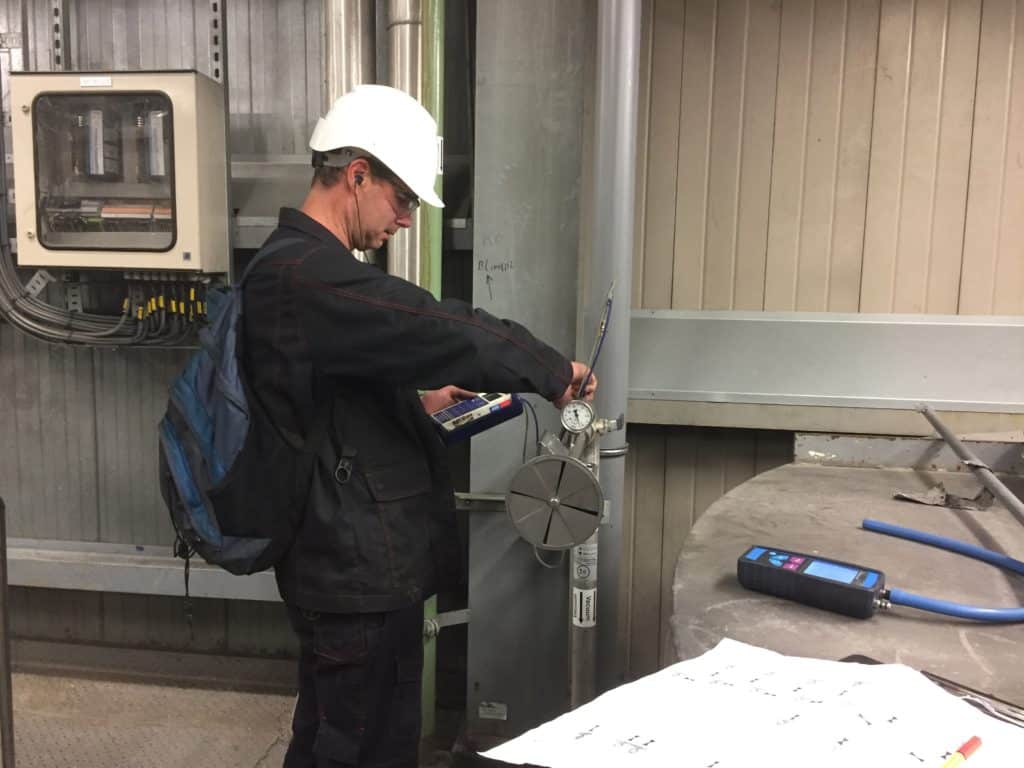
Design & modeling an appropriate solution
To design a system perfectly balanced and aligned with the specifics of the location and operation, we will use our air technical modeling software – a crucial and unique element in customized filtration system design and production as it enables a full understanding of the current situation and prediction of future flows.
The software informs a wide range of design factors. This includes, for example the overpressure protection for the reactors in the dedusting system and the minimum fouling design of the reactor extraction connection. It also includes conceptual hood designs and isometric designs.
In fact, the sheer amount of things the process does take into account is a robust indicator of just how many variables there are and how important customization is to the development of an effective, efficient system.
Based on the findings of the modeling software we are able to make precise predictions covering vital factors such as return on investment (ROI) and the performance of a tailored industrial air solution. Based on this, effectiveness is guaranteed.
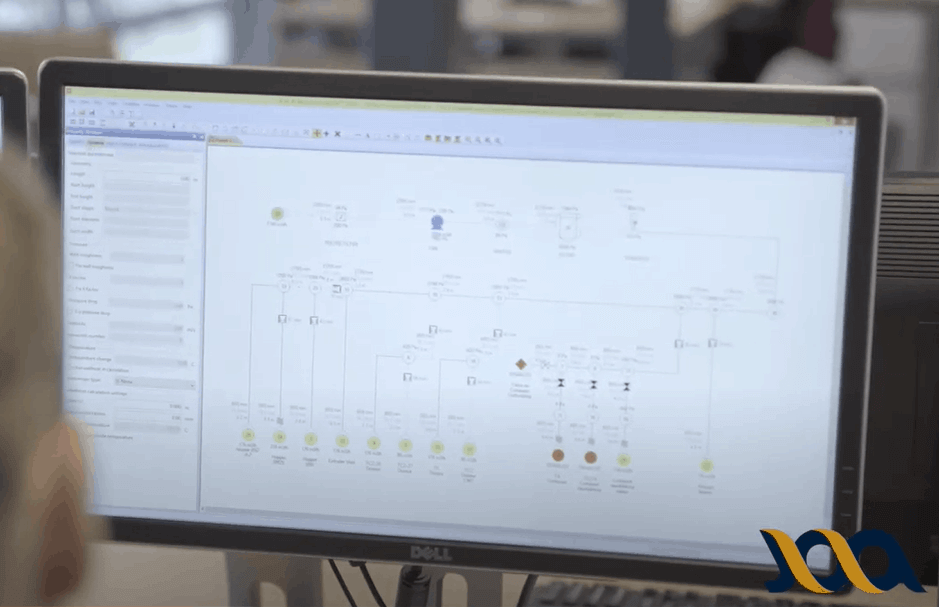
Additional scope
At the same time, if required, the effectiveness of the hood at reactor vessels can be determined.
This carries a number of benefits. For one thing, it gives insights into the behavior of particulate matter and allows prediction of future outcomes.
This offers a first time right approach, eliminating the need to optimize the system post-commissioning – once again increasing efficiency.
Demonstrating the benefits to you
Following this, you will receive a report covering the highlights of the site survey and a list of extraction points. You will also receive GCM models and conceptual drawings.
Face-to-face presentation of filtration requirements
Following the assessment, we will be able to make recommendations to you regarding the steps you can take to improve the effectiveness of your extraction system.
The information provided during consultancy and air technical scenario modelling paves the way for the development of the optimal industrial air solutionfor the site.
All this is important and not only because it is a crucial step in establishing a filtration system tailored to your operations. It is also the means by which the required budget can be established, ensuring there are no hidden surprises in store for you.
Case study: plastic factory
A demonstration of how a custom filtration system has helped a company to improve effectiveness and efficiency can be seen in the example of a large chemical manufacturing plant located in the Netherlands.
The company’s compactor system had not been updated for some time and this led to a number of challenges. An earlier study had revealed that the filter bags the company was using, though offering a low purchase cost, were not the optimal choice for the job.
This resulted in a number of issues over the long-term, as follows:
- Fine dust was not captured effectively
- Build-up of a large filter cake that could not be unloaded by the filter pulse (leading to unscheduled stops on a regular basis)
- High pressure drops across the filters (+3800 Pa) leading to low extraction capacity
The company recently reported that they were experiencing considerable noise from the compactor blow-off. So significant was the noise that there were complaints in the neighbourhood. We were able to show that the sound was due to the accumulation, over a number of years, of fine dust due to incorrect filter use.
The dust had polluted the damper pores so that it no longer functioned. We were able to advise the replacement of the filters for those with a PTFE membrane – with impressive results – and to replace the damper.
We have received feedback from the chemical site that the noise level of the filtration system is now very low. In fact, the sound has been reduced so much that employees have enquired if the system has been switched off. Both the company – and the local residents – are very satisfied with the results.
This case clearly demonstrates the importance of using the correct, appropriate filters for the operation at hand.
Custom solutions: going beyond the quick fix
In summary then, a standardized system can hold immediate appeal, particularly for manufacturers looking for a quick solution. It is fair to say that a standard system can offer relative effectiveness and does bring certain advantages, including a lower cost of initial investment.
There are then, perhaps, scenarios where selection of such a system is justified. This may be the result of relaxed emissions regulations, for example, or on the rare occasion that there is no requirement to provide a safe and healthy workplace for personnel or when a competitive edge is not necessary.
However, in the vast majority of cases, and certainly in the face of long-term requirements, a tailored industrial air solution will always outperform a standard filter solution when it comes to efficient extraction with a balanced system that offer lower maintenance, less stops and no over extraction.
This is not to say that there is no place for some standardization of proven technology. In fact, based on air technical modeling, it is possible to apply standard filters, hoods and other equipment to a tailored solution.
A combination of standardized proven filters, hoods and other equipment based on air technical modeling can be made after a consultancy study is made by JOA – including site survey, data collection and measurements. resulting in a full understanding of a site’s flaws, areas for improvement, leading to new and updated systems.
Capital Expenses vs Operational Expenses
It is striking how many of the benefits of a tailor-made solution relate to either reduced costs or increased productivity. Looked at in this way, the perceived cost-efficiency of the standard system is brought into question. The series produced system almost certainly will offer a better rate of Capital Expenses. However, given the superior Operational Expenses offered by a system aligned with the specific requirements of an operation, a professionally produced non-standard system offers better cost-efficiency over the total life of the product.
Learn more about reducing explosion zoning.
We have calculated that, even allowing for the increase in Capital Expenses associated with creating a customized solution, a financial break-even point can be expected within just 3-5 years.
In short, the benefits of a custom solution are so significant that, with sufficient consideration, there seems little reason not to select this option.
To find out more about how a tailored solution could help your operation contact JOA today.
